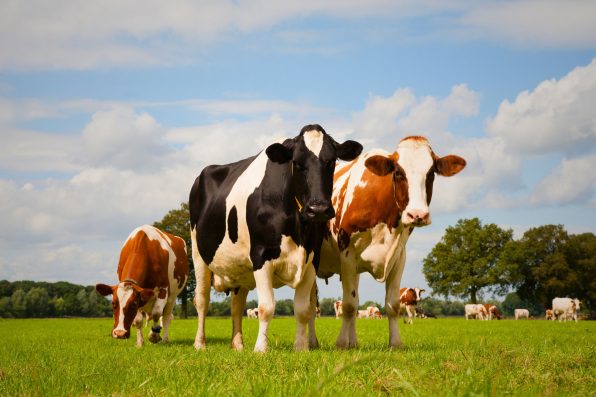Thousands Of Babies Lost Their Lives During The 1850s Due To Falsely Advertised Swill Milk, Which Was Produced By Feeding Dairy Cows Leftover Mash From Whiskey Distilleries

During the 19th century, babies in New York were being poisoned. Almost 8,000 babies per year suffered from uncontrollable diarrhea and died in the 1850s.
Doctors struggled to figure out the cause behind all the deaths. The public came up with some theories, such as cholera infantum and marasmus, but there was not sufficient evidence to confirm that these diseases were the culprits.
Finally, in 1858, a journalist named Frank Leslie determined that milk was responsible for the infants’ deaths. More specifically, it was swill milk, which was produced by feeding dairy cows leftover mash from whiskey distilleries in Brooklyn and Manhattan.
Distillers were trying to maximize profits from their leftover grain. At that time, Americans considered cow milk to be a good substitute for human milk because it was supposed to be full of nutrients.
Lower-class mothers found swill milk appealing because of how affordable it was. Vendors would sometimes sell swill milk for just six cents per quart. By purchasing swill milk, the mothers could wean their babies off human milk sooner and go back to work.
Swill milk also served as a solution for middle-class moms. They were having multiple children but still needed to abide by societal rules out of politeness, such as leading the household and being available for visiting.
If they were nursing all the time, they would not be able to do those things effectively. Additionally, wearing corsets may have played a role in weaning infants earlier. Plus, some men didn’t like their wives to be nursing.
So, New Yorkers slowly made the shift to swill milk, which was falsely advertised as “Pure Country Milk.” It wasn’t possible for actual pure milk to be transported to Manhattan from rural farms without spoiling. New York City also lacked grazing pastures for the cows, and shipping in natural food was extremely expensive.
Distillers worked around these issues by attaching metal sheds to their facilities, where they fed cows with hot cereal byproducts. That way, they could save some money and still produce milk in the city.

erikdegraaf – stock.adobe.com – illustrative purposes only, not the actual cows
It is said that swill-fed cows produced between five and 25 times more milk than cows that grazed on grass. However, an all-swill diet was harmful to the animals.
According to Dr. Catherine McNeur’s book, Taming Manhattan: Environmental Battles in the Antebellum City, cows would refuse to eat for days when the boiling slop was introduced to them. Eventually, they became so hungry that they had no choice but to consume it.
“A diet consisting exclusively of the swill made the cows sick, led to ulcerated sores all over their bodies, and caused their tails to fall off,” McNeur wrote.
The milk they produced had an unnatural blue tint to it, so vendors would mix in stuff like chalk, eggs, flour, and Plaster-of-Paris to make the color and consistency look better. By the late 1830s, swill milk made up 50 to 80 percent of milk in the large northeastern cities of America.
A temperance reformer named Robert Harley tried to spread the word about the link between swill milk and infant mortality, but his findings were dismissed because alcohol-loving New Yorkers accused him of pushing an anti-distillery agenda.
Furthermore, wealthy distilleries had ties with officials, so they weren’t closely regulated by the government, and sick cows were hidden out of sight.
When Frank Leslie published a piece on swill milk, complete with horrifying pictures, people became angry about the quality of milk they were being sold. Thus, the Swill Milk Scandal began. Mobs gathered outside the doors of dairy facilities in protest.
Milk regulations were finally established in 1862. However, issues with adulterated milk continued until railways and pasteurization became commonplace. In 1906, Congress passed the Pure and Food Drug Act, which helped deter the manufacture and sale of potentially poisonous foods.
Today, the events that occurred during the Swill Milk Scandal are still relevant, such as the controversies regarding the labeling of organic and genetically modified foods. It showcases how manufacturers have long failed to be transparent about what goes into our food.
Sign up for Chip Chick’s newsletter and get stories like this delivered to your inbox.
More About:Freaky





